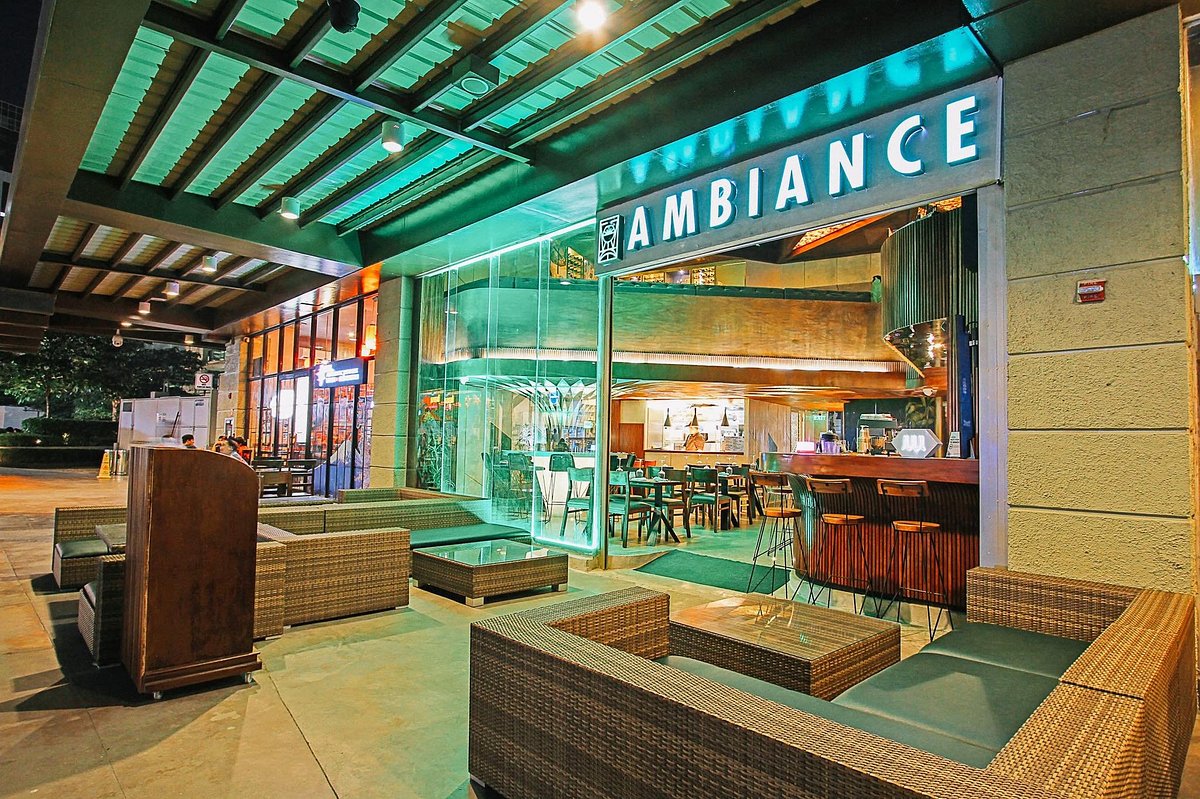Asian Fusion Restaurant: An Unique Dining Experience in the Heart of Islamabad
Asian Fusion Restaurant: An Unique Dining Experience in the Heart of Islamabad
Blog Article
Savor Genuine Oriental Food With a Pan-Asian Twist for a Culinary Experience
Beginning on a cooking journey via authentic Eastern food, improved with a Pan-Asian spin, supplies an one-of-a-kind opportunity to explore the rich tapestry of flavors that define the area's diverse culinary customs. This experience invites you to appreciate the beautiful equilibrium of preferences-- sweet, salty, spicy, and sour-- harmonized by fragrant natural herbs and spices. Think of the innovative combination of Thai curry and ramen or the unforeseen joy of sushi burritos. As you ponder these luring recipes, consider the cultural narratives and historical influences that form them, each bite providing a tale waiting to be found.

Checking Out Pan-Asian Tastes
In the realm of worldwide gastronomy, Pan-Asian cuisine stands out for its impressive diversity and the harmonious interaction of flavors from different Eastern cultures. This cooking strategy celebrates the abundant traditions and special ingredients discovered throughout the continent, developing a tapestry of preferences that is both rewarding and intriguing. Secret to Pan-Asian food is its ability to balance contrasting flavors-- sweet, salted, spicy, and sour-- while highlighting the quality and high quality of each active ingredient.
From the umami-rich soy sauce of Japan to the intense chili peppers of Thailand, Pan-Asian food provides an extensive scheme of tastes. These components are usually combined in creative means, improving dishes with layers of complexity. For example, the usage of fragrant herbs such as lemongrass and cilantro, common in Vietnamese and Thai food, adds a revitalizing illumination to recipes, while the consolidation of coconut milk provides a luscious, abundant structure.
The emphasis on fresh produce and fragrant spices makes sure that each meal is not just a banquet for the taste but likewise for the senses. Pan-Asian cuisine invites diners to embark on a cooking trip, discovering the huge and varied landscapes of Asian gastronomy with every bite.
Blend Recipes to Attempt
While Pan-Asian food is commemorated for its conventional flavors, the modern culinary landscape is increasingly welcoming combination dishes that blend these classic components with impacts from various other regions. This cutting-edge strategy not only honors the abundant heritage of Asian cookeries yet likewise presents novel preference experiences that interest modern palates.
A prime instance of such a blend recipe is the Korean-Mexican taco, where marinaded bulgogi beef is wrapped in a warm tortilla, topped with kimchi and a zesty gochujang-infused salsa. This combination marries the strong, full-flavored tastes of Korea with the lively, fresh aspects of Mexican cuisine. In a similar way, sushi burritos have obtained appeal, integrating the delicate artistry of Japanese sushi with the passionate, hand-held convenience of a burrito, often featuring combination active ingredients like tempura shrimp and avocado with a drizzle of wasabi mayo.
An additional significant dish is Thai curry ramen, which instills the luscious, fragrant flavors of Thai curry into the soothing brew of typical Japanese ramen, producing a harmonious blend that tantalizes the senses. These combination recipes extend past simple novelty; they represent a culinary discussion between societies, motivating expedition and development in the globe of Pan-Asian food.
Necessary Ingredients and Flavors
To genuinely appreciate Pan-Asian food, one must comprehend the important components and seasonings that create its structure. This varied culinary style attracts from an abundant tapestry of Oriental traditions, employing a harmonious mix of textures and tastes.
Aromatic aspects are pivotal, with garlic, lemongrass, and ginger being common across numerous Pan-Asian recipes. These active ingredients give an aromatic base that boosts the complexity of tastes. Flavors such as celebrity anise, cardamom, and cinnamon introduce warmth and personality, resembling influences from regions like China and India.

Cooking Techniques and Tips
Understanding the art of Pan-Asian food needs knowledge with its distinctive food preparation methods, each adding to the vibrant tapestry of flavors this culinary custom is celebrated for. Central to these techniques is the stir-fry, a quick cooking method that maintains the nutritional integrity and brilliant shades of ingredients. Making use of a frying pan, the stir-fry method permits even warm circulation, important for achieving the particular appearance and taste balance of Pan-Asian recipes.
An additional fundamental method is steaming, specifically common in Chinese cuisine. This mild method preserves the all-natural flavors and nutrients of active ingredients, making it excellent for seafood and veggies. Dumplings, a precious staple, frequently benefit from steaming, resulting in soft, delicious appearances.
Barbecuing, also integral, gives great smoky depths to dishes such as Oriental bulgogi or Japanese yakitori (pan asian dining Islamabad). This method often entails marinading ingredients, permitting tastes to pass through deeply prior to cooking over an ichiban sushi open fire or warm plate
Lastly, mastering the art of balancing tastes-- sweet, sour, salted, bitter, and umami-- is crucial. Properly layering these aspects can boost a dish from ordinary to phenomenal, using a complicated and pleasing cooking experience that embodies the essence of Pan-Asian cuisine.
Dining Experiences Worldwide
Across the world, Pan-Asian cuisine offers an unparalleled eating experience, commemorated for its rich tapestry of flavors and lively presentations. This cooking phenomenon has gone beyond social borders, catching the hearts and tastes of food lovers worldwide. In worldwide cities like New York, London, and Sydney, Pan-Asian dining establishments work as fusions where culinary traditions from Thailand, Japan, China, and past assemble, offering restaurants with a diverse mix of meals that highlight the area's variety.
The global allure of Pan-Asian food hinges on its ability to additional resources offer both authenticity and technology. Cooks masterfully marry conventional ingredients such as lemongrass, soy sauce, and miso with modern methods, leading to meals that are both refreshingly brand-new and acquainted. This combination enables restaurants to start a cooking trip that appreciates heritage while embracing modernity.
In addition, dining experiences are elevated with attentively designed settings that mirror the principles of Pan-Asian looks. From minimalist Japanese-inspired interiors to vibrant Thai-themed spaces, each dining establishment supplies a distinct ambiance that complements the culinary offerings. As a result, customers are not merely eating a dish but partaking in a cultural experience, making Pan-Asian dining an absolutely global phenomenon.
Final Thought
The expedition of Pan-Asian food uses an extensive understanding of the detailed interaction of tastes and culinary traditions throughout Asia. By accepting combination dishes such as Thai curry ramen and sushi burritos, the cooking journey not only highlights the flexibility of standard active ingredients but likewise showcases cutting-edge contemporary strategies. This gastronomic experience, enriched by important spices and cooking methods, supplies an unique opportunity to appreciate the social diversity and cooking artistry that define Pan-Asian food on an international scale.
Embarking on a cooking trip via authentic Asian cuisine, enhanced with a Pan-Asian twist, supplies an unique chance to discover the abundant tapestry find out here of tastes that define the area's diverse culinary customs.In the realm of international gastronomy, Pan-Asian cuisine stands out for its remarkable variety and the unified interaction of flavors from numerous Asian cultures. Secret to Pan-Asian cuisine is its ability to stabilize different tastes-- sweet, salty, spicy, and sour-- while highlighting the quality and quality of each ingredient.

Report this page